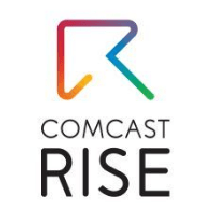Benefits of Blockchain for The Insurance Industry


As technology progresses, insurers look for innovative ways to boost transparency, mitigate fraud, and expedite payouts. One emerging tool is blockchain insurance, a decentralized system that can log and confirm transactions in near real-time. But many professionals still wonder what is blockchain in insurance and how widely it might transform business models. Over the last few years, multiple pilot programs have demonstrated that distributing records across multiple nodes can eliminate duplicate paperwork, speed up claims processing, and help insurers track policies globally.
In parallel, the rise of blockchain in banking and insurance has showcased how the same underlying technology that streamlined financial transactions can enhance coverage for policyholders. Indeed, blockchain in the insurance market intrigues executives by offering a secure method to verify identity documents, medical records, or property damage evidence. As these solutions mature, the entire ecosystem — from multinational firms to local agents — could see improved trust and greater operational efficiency.
A Deeper Look at Blockchain
Within insurance circles, experts highlight types of blockchain in banking and insurance, mainly permissioned and private variants that let firms control who can view data. This synergy of blockchain and insurance addresses core challenges like data integrity and policy duplication. Another driver of industry interest is the emergence of blockchain-based insurance, where some carriers experiment with tokens or self-executing coverage agreements.
Adopters should, however, pay attention to a robust blockchain framework for the insurance industry that harmonizes data standards and compliance rules. A well-designed ledger system can share policy details among authorized parties without exposing sensitive client information to the public. In that light, a blockchain-based insurance company typically employs cryptographic checks, timestamped ledgers, and permissioned access to ensure both security and confidentiality.
The question, of course, remains: how is blockchain used in insurance on a day-to-day basis? Put simply, once a claim or a policy is registered on-chain, all relevant stakeholders — insurers, brokers, reinsurers — receive consistent updates about changes. This eliminates the risk of inconsistent records, fosters real-time collaboration, and counters fraudulent claims. The foundation is laid for a stable environment where trust is maintained through decentralized consensus and transparent processes.
Key Benefits and Use Cases
So how can blockchain be used in insurance practically? One standout example is parametric coverage: a policy automatically triggers a payout when conditions — like severe weather — are met, minus the usual administrative delays.
Additionally, blockchain-based crop insurance programs aim to support farmers in developing countries by automating claim settlements linked to rainfall or temperature indexes. Meanwhile, blockchain health insurance claims can compile patient records from multiple providers, preventing duplicated treatments and suspicious billing. Another intriguing example is blockchain flight delay insurance, where travelers receive instant compensation if their flight meets the criteria for delay. In the business realm, crypto business insurance highlights how some carriers cover cryptocurrency holdings or tokens, using on-chain data to validate claims.
These developments underscore how far-reaching the technology’s impact might be. From farmland to airports and even digital currencies, the distributed ledger approach consistently offers an alternative to lengthy manual reviews. As trust grows, more markets will likely adopt these streamlined solutions.
Security, Automation, and Beyond
When discussing how blockchain technology benefits the insurance industry, the conversation often highlights security. Unlike centralized databases susceptible to single points of failure, a distributed ledger stores data across multiple nodes. This approach forms the backbone for emerging blockchain insurance startups that design next-generation coverage. Their blockchain insurance application harnesses cryptographic proofs to confirm the authenticity of client-submitted documents or claim events.
Even incumbent blockchain insurance companies increasingly explore advanced features that reduce friction. For instance, an insurer might incorporate real-time data feeds for parametric coverage, releasing funds to policyholders with minimal human intervention. Similarly, an established brand might join an alliance of insurance companies using blockchain to share risk data more transparently, thereby lowering underwriting costs.
Furthermore, carriers are developing new solutions for blockchain in general insurance, ensuring every step from policy issuance to renewal remains consistent and tamper-free. Interestingly, blockchain for health insurance often resonates with consumers looking for privacy. The ledger can reveal whether a policy covers a specific treatment without disclosing unnecessary personal data. Through these mechanisms, it becomes clear how blockchain can help the insurance industry tackle long standing inefficiencies.
Collaboration and Challenges

As interest in the blockchain insurance market grows, so does the momentum behind the blockchain insurance industry. Firms worldwide test pilot programs, forging new alliances and co-developing solutions that meet stringent regulatory demands. Meanwhile, certain insurance blockchain projects already show promise in producing cost savings and faster payouts. Such advancements benefit from a cohesive blockchain framework for the insurance industry, where participants agree on data formats, security protocols, and compliance standards.
No wonder many see this synergy as a game-changer. Yet, challenges remain. While some carriers fully embrace the ledger approach, others question if this is just hype or a lasting revolution. Careful development, collaboration across jurisdictions, and standardization can ensure widespread adoption. Another area to watch is the role of reinsurance. With a single data source, reinsurers can process claims more accurately, thereby reinforcing industry stability.
In the midst of these shifts, blockchain-based insurance reveals a bright future, but each company must consider local laws, consumer preferences, and technical readiness. The essential question is blockchain in insurance opportunity or threat? For those who adapt swiftly, the opportunity is immense. They might link coverage with parametric triggers, or serve specialized markets such as a crypto insurance broker offering coverage for digital assets. Others may remain cautious.
Ultimately, the synergy between ledger technology and coverage solutions can be a boon for many. By embracing the possibilities, carriers help shape global standards that deepen trust and efficiency across the board. For those looking to unwind after diving into these tech-driven changes, a brief gaming interlude with 777fun might be the perfect break — reminding us that digital innovation can also be playful.
So, how is blockchain used in insurance today? It anchors data integrity, empowers real-time collaboration, and verifies transactions swiftly. Many see a bright horizon for blockchain-based insurance company models that scale parametric coverage, expedite medical reimbursements, and automate property claims. Indeed, as industry players grasp how blockchain can help insurance industry processes, the synergy of distributed ledgers and coverage solutions seems unstoppable. The promise of blockchain in banking and insurance points to reduced operational costs, heightened transparency, and greater customer satisfaction. With consistent research and prudent governance, a robust ecosystem can form — bringing widespread improvements to coverage across the globe.



